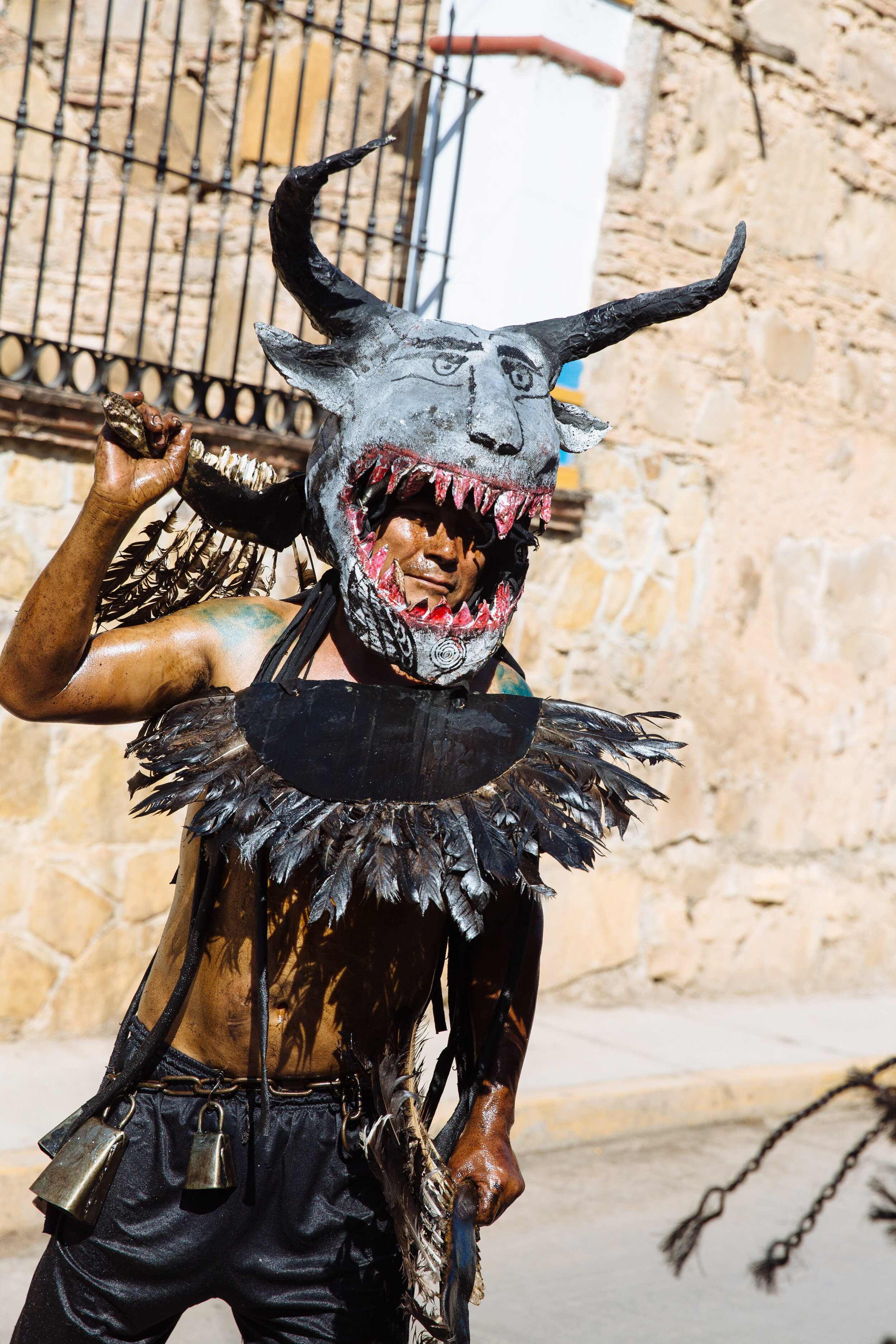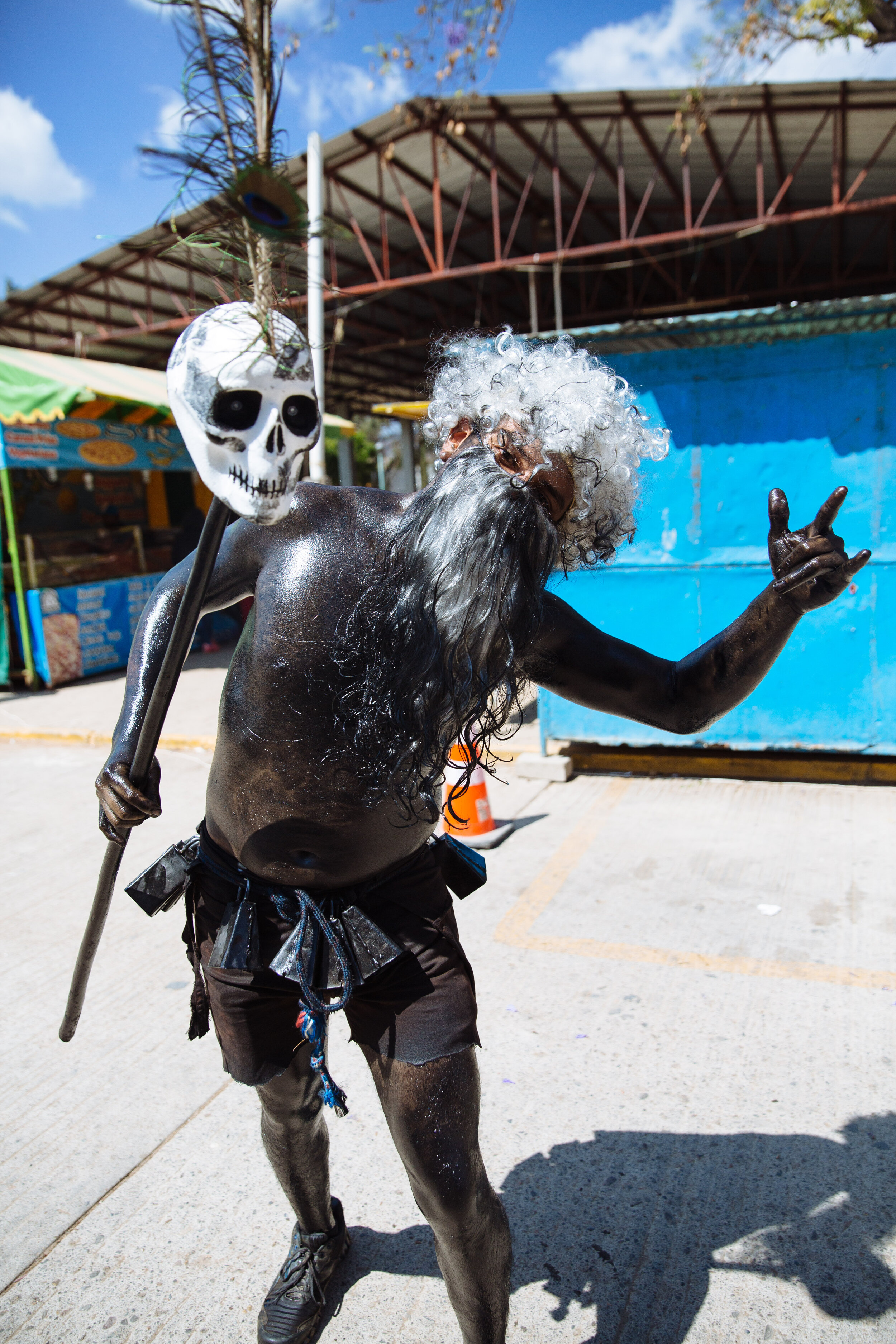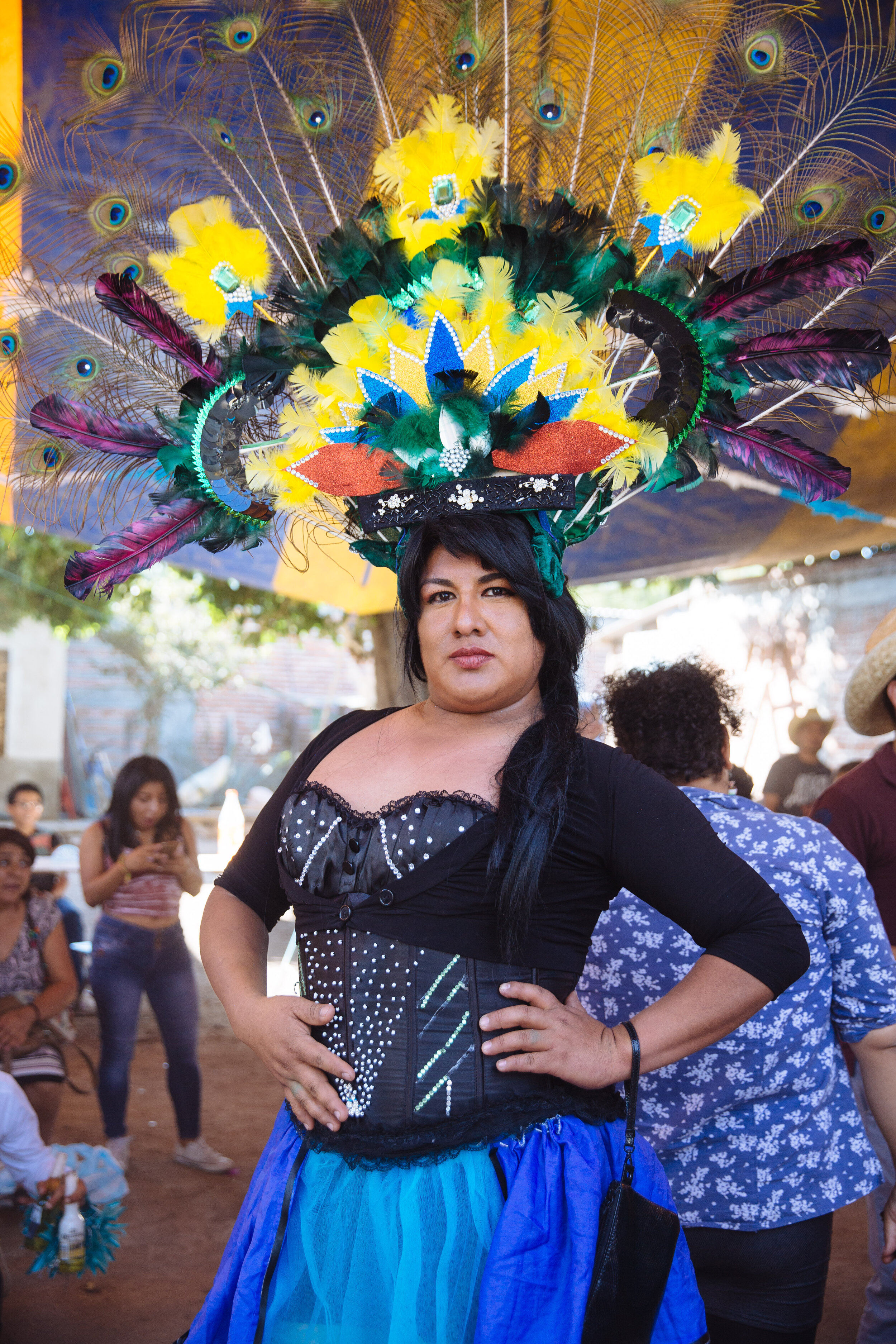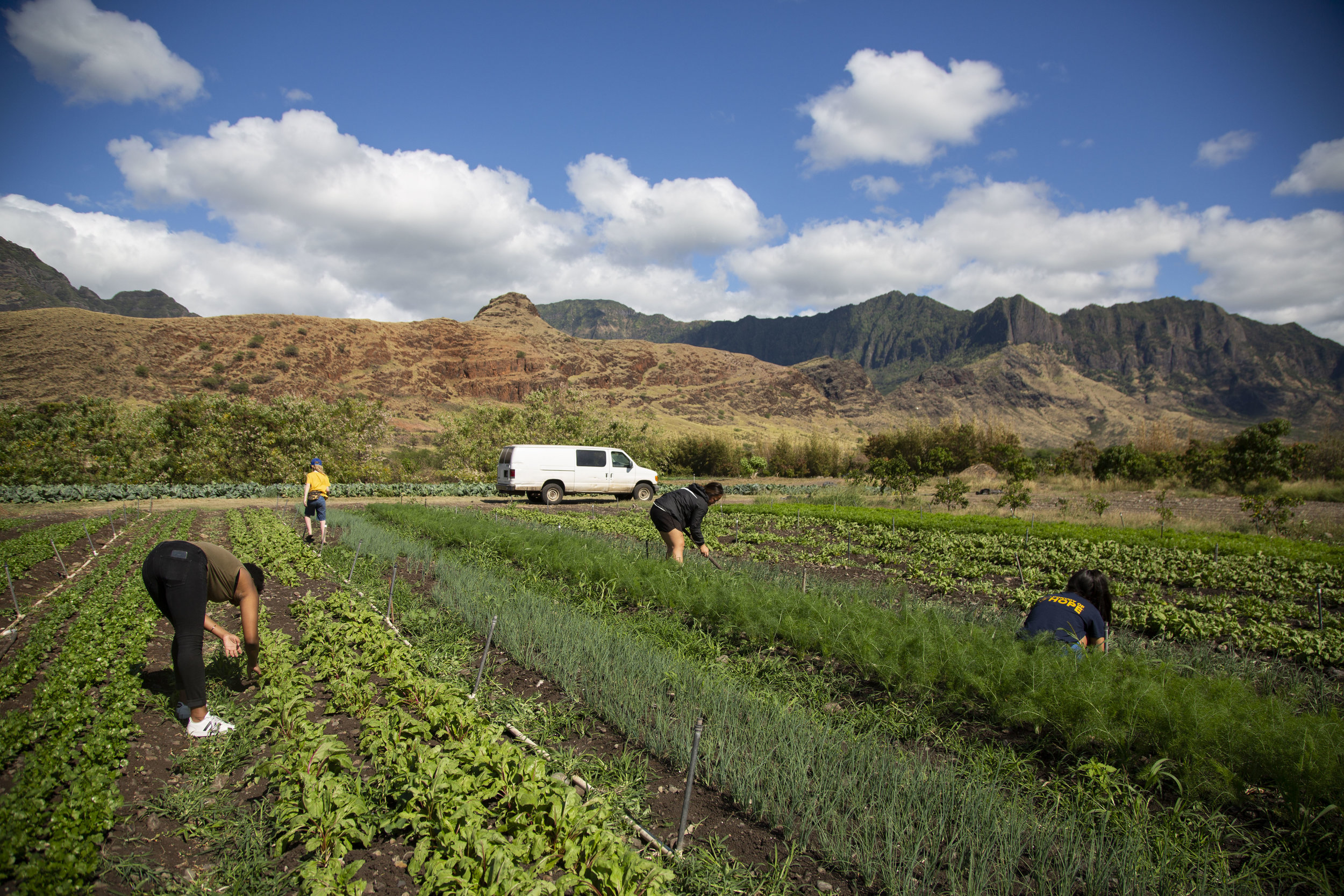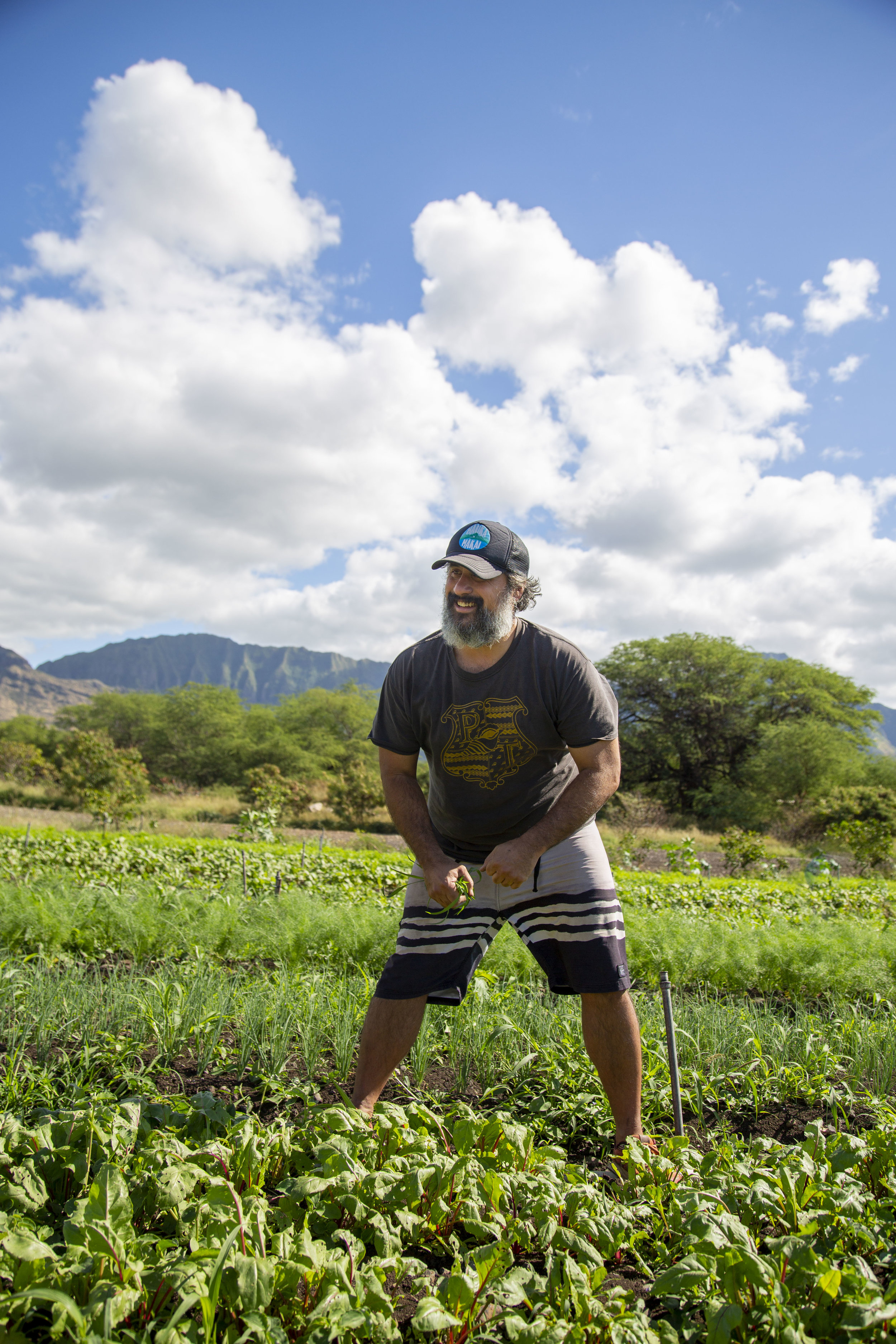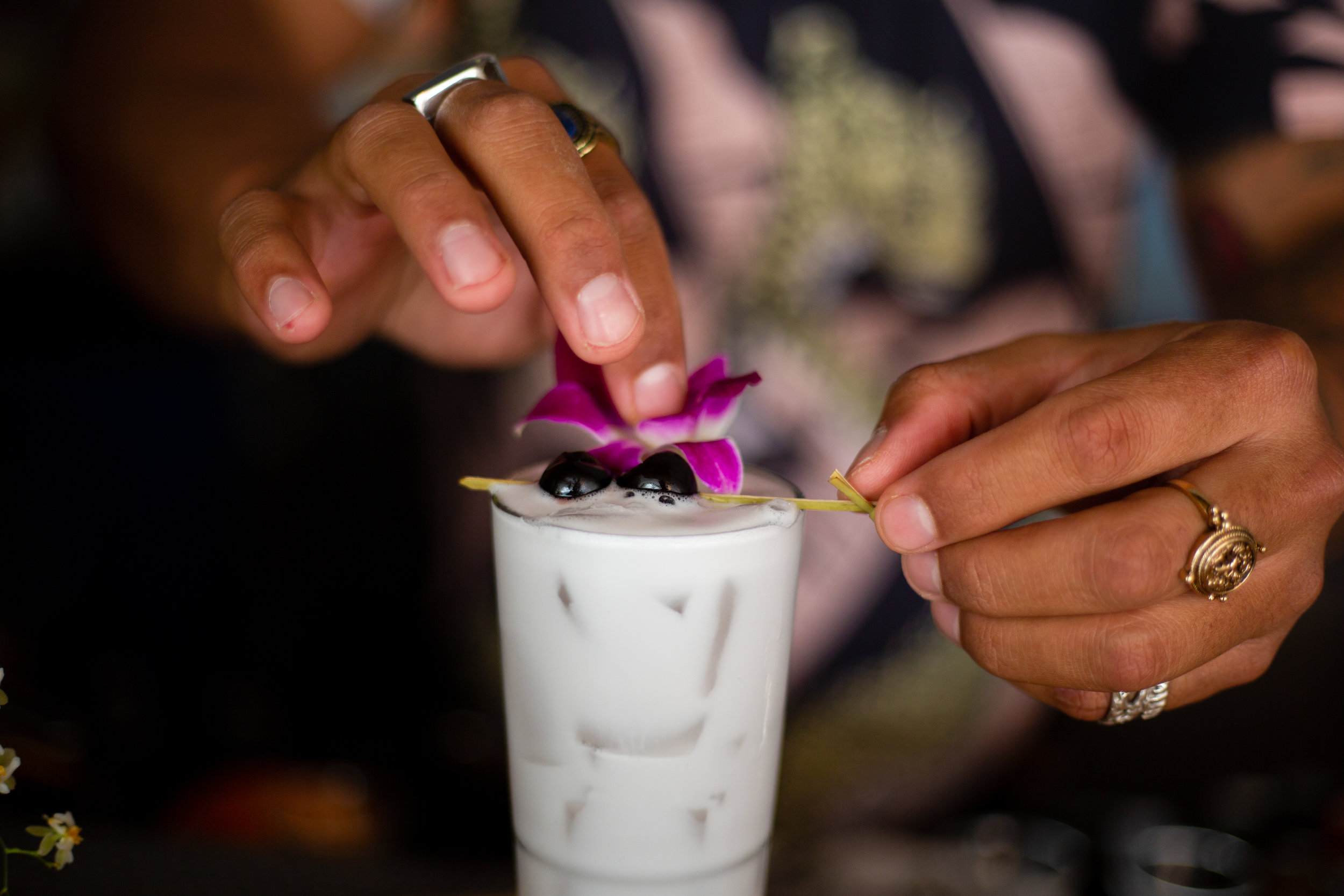GET THE DEMONS OUT
Stay Wild
Story & Photos By Liz Devine // @Liz_devine
As we drove into town we heard cowbells and yelling in the distance. Then we saw a group of men and boys running towards us, their whole bodies painted in black, their heads adorned with horns and masks. They were devils.
There’s a unique tradition in San Martín Tilcajete, just before Lent begins, where people dress up as devilish and demonic creatures, then parade and holler throughout the town, freeing their demons. The demons and creatures come in and out of the town square throughout the day, but the main place to stop and get those demons out is at the Mayor’s house, where there’s music, dancing, food, and drinks.
When we arrived at the Mayor’s house, I noticed a whole other type of celebratory dress, and that was cross-dressing. These men looked fabulous and were wearing everything from prom or wedding dresses to a giant headdress of peacock feathers. In one direction I saw devils, and the other I saw men in drag.
The whole town comes out for the festivities. Even if they aren’t dressing up, they find a spot on the streets to watch and cheer on the wildness of the devils, with the smallest hint of a smile. If you were one of the unlucky ones, the devils would leave their mark on you: a touch from one of their black-painted hands.
I know by sharing these images, more travelers may be enticed to witness this beautiful spectacle for themselves, and I want to speak to the travelers who come after me because I know you’re coming. If you find yourself lucky enough to witness this carnival, never forget you’re a guest. Go into the situation with respect, try to understand traditions, ask questions, participate if invited, and be mindful—but of course, have fun.



